Repeat Call Rate Tracking Made Simple in 2025
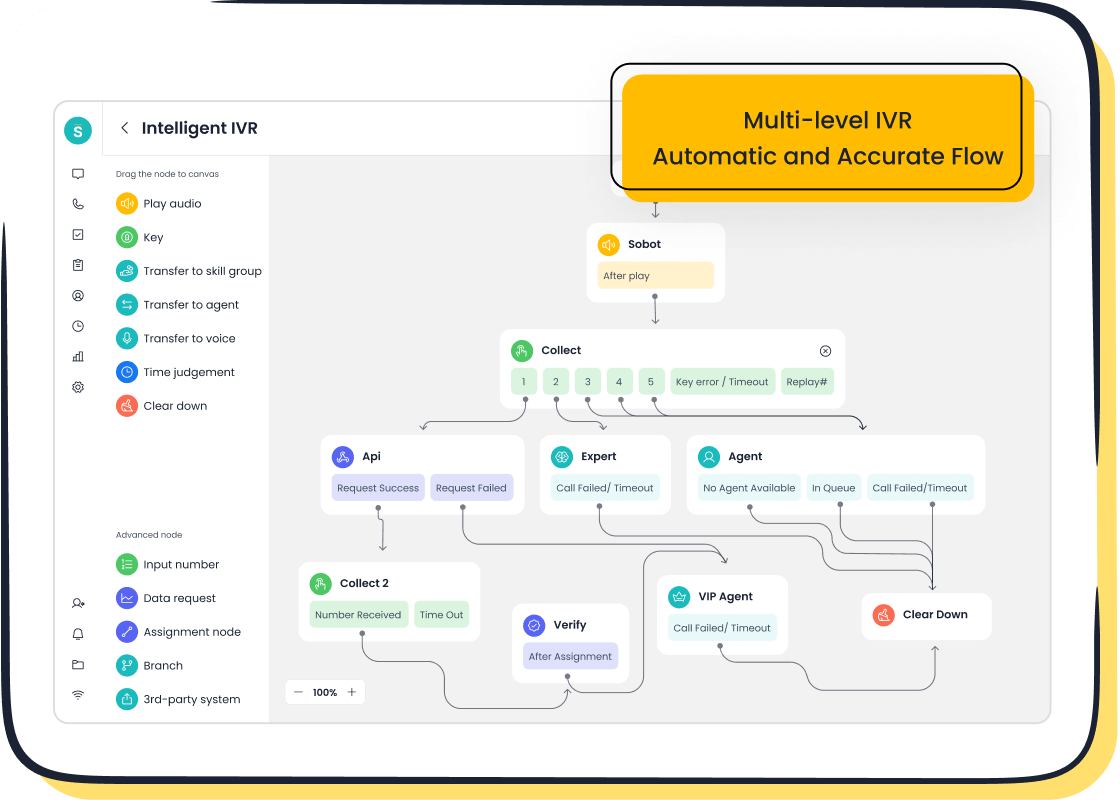
Repeat call rate (RCR) measures how often customers contact a call center multiple times to resolve the same issue. It reflects the efficiency of your service and directly impacts customer satisfaction. For instance, an RCR of 20% means one in five calls is a repeat, signaling unresolved problems. Industry benchmarks suggest keeping RCR below 10% for optimal performance.
In 2025, RCR has become a critical metric for customer retention. High RCR erodes trust and loyalty, while low RCR boosts satisfaction. Tools like Sobot's Voice/Call Center simplify tracking by offering real-time monitoring, smart call routing, and data analytics. These features help you identify patterns, reduce repeat calls, and enhance customer experience.
Understanding Repeat Call Rate (RCR)
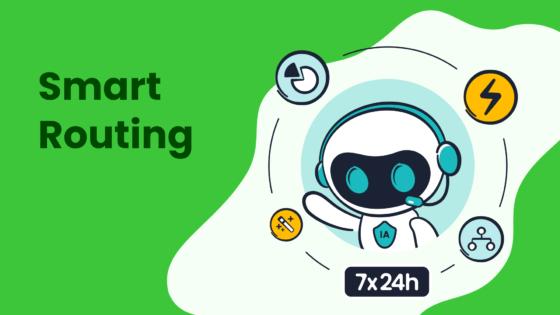
What is Repeat Call Rate?
Definition and explanation of RCR as a customer service metric.
Repeat call rate (RCR) measures how often customers contact a call center multiple times to resolve the same issue. It highlights the effectiveness of your service in addressing customer concerns during the first interaction. A lower RCR indicates that your team resolves issues efficiently, while a higher RCR suggests unresolved problems that require attention. This metric serves as a key indicator of your call center's performance and its ability to meet customer expectations.
Common standards for RCR in the call center industry.
In the call center industry, RCR standards vary depending on the type of service provided. However, benchmarks often classify performance levels based on repeat contact rates. For example:
| Performance Level | Repeat Contact Rate |
|---|---|
| Excellent | < 5% |
| Good | 5-10% |
| Average | 10-15% |
| Needs Improvement | > 15% |
Striving for an RCR below 10% ensures that your call center delivers high-quality service and maintains customer satisfaction.
Why RCR Matters
The link between RCR and customer satisfaction.
RCR directly impacts customer satisfaction. A high RCR often signals unresolved issues, leading to frustration and dissatisfaction. Customers expect their concerns to be resolved during the first call. When this expectation is met, it boosts their confidence in your service. In fact, achieving a low RCR aligns closely with improving your customer satisfaction score, as it reflects your team's ability to provide effective solutions.
How RCR impacts operational efficiency and retention metrics.
High RCR affects your call center's operational efficiency by increasing resource consumption. Agents spend more time handling repeat calls, which reduces their availability for new inquiries. This inefficiency can overwhelm your team and escalate costs. On the other hand, a low RCR enhances first call resolution rates, streamlines operations, and improves retention metrics. For instance:
| Metric | Impact on Customer Retention |
|---|---|
| Customer Satisfaction | High RCR indicates unresolved issues, leading to frustration and decreased satisfaction. |
| Operational Efficiency | High RCR increases resource consumption and costs, potentially overwhelming support teams. |
| Quality of Service | Low RCR suggests effective solutions provided on the first contact, enhancing retention. |
By focusing on reducing RCR, you can improve both customer satisfaction and your call center's overall performance.
The Importance of RCR in 2025
Enhancing Customer Experience
How unresolved issues affect customer trust and loyalty.
Unresolved issues often lead to frustration, eroding trust in your customer support. When customers repeatedly contact your call center for the same problem, they lose confidence in your ability to resolve their concerns. This dissatisfaction can increase the customer churn rate, as frustrated customers are more likely to switch to competitors. Studies show that tracking repeat call rate (RCR) helps identify recurring problems, enabling you to address them proactively. By resolving issues on the first call, you can build trust and improve customer satisfaction.
The role of RCR in improving repeat customer rate.
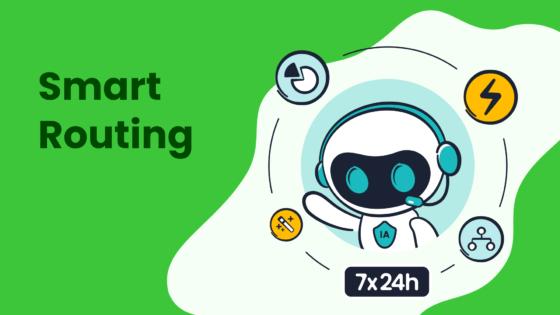
A low RCR directly contributes to a higher repeat customer rate. Customers who experience efficient service are more likely to return. For example, Sobot's Voice/Call Center uses smart call routing and real-time monitoring to reduce repeat calls. These features ensure that agents resolve issues effectively, boosting the likelihood of repeat business. By focusing on first call resolution, you can enhance the overall customer experience and foster loyalty.
Driving Operational Efficiency
Cost implications of high RCR for call centers.

High RCR increases operational costs. Each repeat call consumes additional resources, including agent time and system bandwidth. This inefficiency can strain your call center, especially during peak periods. Reducing RCR minimizes these costs and improves resource allocation. For instance, integrating tools like Sobot's Voice/Call Center allows you to track and analyze call data, helping you identify inefficiencies and optimize operations.
How tools like Sobot's Voice/Call Center optimize agent productivity.
Sobot's Voice/Call Center enhances agent productivity through features like a unified workspace and AI-powered voicebots. These tools streamline workflows, enabling agents to focus on resolving complex issues. By reducing repeat calls, your team can handle more inquiries efficiently, improving both customer support and operational performance.
Boosting Business Performance
The connection between RCR and customer retention metrics.
RCR plays a crucial role in customer retention metrics. A low RCR indicates effective problem resolution, which enhances customer satisfaction and retention. For example, businesses that prioritize first call resolution often see a lower customer churn rate. By addressing issues promptly, you can improve your customer retention rate and strengthen your brand's reputation.
How RCR influences brand reputation and revenue growth.
A low RCR not only boosts customer satisfaction but also enhances your brand's reputation. Customers associate efficient service with reliability, making them more likely to recommend your business. This positive perception drives revenue growth. Tools like Sobot's Voice/Call Center help you achieve this by providing actionable insights to reduce repeat calls and improve service quality.
Measuring Repeat Call Rate Effectively
Calculating RCR
Step-by-step guide to the RCR formula
Calculating repeat call rate (RCR) is straightforward. Use the formula:
RCR = (Number of Repeat Contacts / Total Number of Contacts) × 100
For example, if your call center handles 100 total contacts in a week and 20 of those are repeat calls, the calculation would be:
RCR = (20 / 100) × 100 = 20%
This formula helps you measure how often customers need to contact your team multiple times for the same issue. A lower RCR indicates better first call resolution and improved customer satisfaction.
Real-world examples of RCR calculations
Imagine a call center receives 500 calls in a month. Out of these, 75 are repeat calls. Using the formula:
RCR = (75 / 500) × 100 = 15%
This result shows that 15% of calls are repeats, suggesting room for improvement in call resolution. Tools like Sobot's Voice/Call Center can help reduce this percentage by providing contact center analytics and smart call routing.
Tools for RCR Measurement
Features of Sobot's Voice/Call Center for RCR tracking

Sobot's Voice/Call Center simplifies RCR tracking with advanced features:
- Real-time monitoring: Analyze call data instantly to identify repeat calls.
- Unified workspace: Access customer history and agent performance metrics in one place.
- AI-powered voicebots: Automate responses to common queries, reducing repeat calls.
- Call analytics: Gain insights into call resolution and customer satisfaction trends.
These tools improve first call resolution and help you achieve better retention metrics. Learn more about Sobot's Voice/Call Center here.
Other analytics platforms for monitoring RCR
While Sobot offers comprehensive solutions, other platforms also provide tools for tracking RCR. These include dashboards for fcr measurement, customer support insights, and call analytics. However, Sobot's integration capabilities and global network availability make it a preferred choice for businesses seeking efficient contact center analytics.
Overcoming Measurement Challenges
Identifying repeat calls accurately
Accurately identifying repeat calls can be challenging. Common errors include agent mistakes (38%), customer miscommunication (13%), and organizational policies (49%). These issues often stem from unresolved problems or recurring inquiries. Using AI-powered tools like Sobot's Voice/Call Center minimizes errors by automating call tracking and providing detailed call resolution data.
Addressing data integration and silo issues
Data silos hinder effective RCR measurement. Fragmented systems make it difficult to track customer interactions across channels. Sobot's platform solves this by integrating CRM systems and customer support tools, ensuring seamless access to call analytics. This integration improves fcr measurement and enhances customer satisfaction scores.
Actionable Strategies to Improve RCR
Leveraging Data and Analytics
Using call data to identify recurring issues.
Call data provides valuable insights into recurring issues that lead to repeat calls. By analyzing customer feedback and agent performance metrics, you can pinpoint common problems and address them effectively. For example, if multiple customers report similar technical issues, you can update your knowledge base or train agents to resolve these concerns faster. Tools like Sobot's Voice/Call Center simplify this process by offering contact center analytics that track call resolution trends. This data-driven decision-making approach improves first call resolution and reduces repeat call rates.
Predictive analytics for proactive problem-solving.
Predictive analytics helps you anticipate potential issues before they escalate. By examining historical customer data, you can identify patterns that indicate unresolved problems. For instance, predictive tools can flag accounts likely to require follow-up calls, allowing agents to address concerns proactively. This reduces repeat calls and enhances customer satisfaction. According to industry data, leveraging predictive analytics can shorten average handle time by up to 40% and decrease call escalations by 5-20%. These benefits translate into significant cost savings and better retention metrics.
Empowering Customer Service Teams
Training agents to handle complex issues effectively.
Well-trained agents are essential for reducing repeat calls. Training programs should focus on equipping agents with the skills to resolve complex issues during the first interaction. For example, role-playing scenarios can prepare agents to handle challenging customer inquiries. Sobot's unified workspace supports this by providing agents with real-time access to customer data and call history, enabling them to offer personalized solutions. Enhanced training leads to fcr improvement, which directly impacts retention metrics and repeat customer rate.
Providing tools like Sobot's unified workspace for better call management.
Efficient tools empower your team to manage calls effectively. Sobot's unified workspace integrates customer support channels, offering a centralized platform for agents. This feature allows agents to view customer history, track call resolution progress, and manage inquiries seamlessly. By streamlining workflows, Sobot's platform reduces repeat calls and improves customer satisfaction. A unified workspace also enhances agent productivity, enabling your team to focus on delivering high-quality service.
Implementing Advanced Technology
Role of AI and automation in reducing repeat calls.
AI and automation play a pivotal role in minimizing repeat calls. AI-powered voicebots can handle repetitive queries, freeing agents to focus on complex issues. For example, Sobot's Voice/Call Center uses AI to analyze root causes of repeat calls, improving first call resolution rates. Statistics show that businesses using AI report 35% greater customer satisfaction and a 25% reduction in operational costs. These advancements not only enhance customer support but also drive better retention metrics.
Using CRM systems to maintain customer history and context.
CRM systems help maintain detailed customer histories, ensuring agents have the context needed to resolve issues efficiently. By integrating CRM with contact center analytics, you can track interactions across channels and reduce data silos. Sobot's platform excels in this area, offering seamless CRM integration that enhances call resolution. Access to comprehensive customer data enables agents to provide personalized support, boosting the repeat customer rate and overall satisfaction.
Continuous Monitoring and Optimization
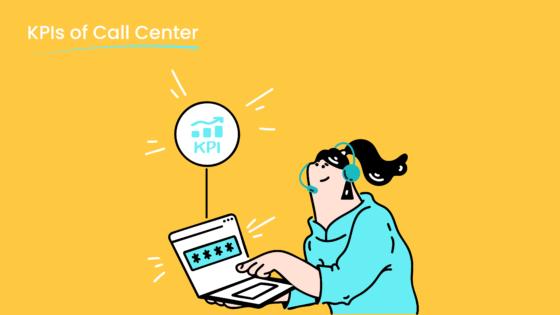
Setting benchmarks and tracking progress with tools like Sobot's Voice/Call Center
Establishing clear benchmarks is essential for improving your call center's performance. Metrics like average response time, customer satisfaction ratings, and call resolution rates provide a foundation for evaluating success. For example, tracking call resolution rates helps you identify how effectively your team resolves issues on the first contact. Tools like Sobot's Voice/Call Center simplify this process by offering real-time contact center analytics. These analytics allow you to monitor repeat calls, assess agent performance metrics, and gain AI-driven insights into call dynamics.
Here’s a quick overview of key performance metrics to track:
| Performance Metric | Description |
|---|---|
| Average Response Time | Measures the time taken to respond to customer inquiries, indicating efficiency. |
| Customer Satisfaction Ratings | Reflects customer feedback on service quality, essential for assessing performance. |
| Call Resolution Rates | Indicates the percentage of calls resolved on the first contact, crucial for customer experience. |
| AI-Driven Insights | Provides real-time analysis of call dynamics, enhancing training and performance evaluation. |
| Continuous Monitoring | Ensures ongoing assessment and adaptation to evolving customer needs and industry standards. |
By leveraging these benchmarks, you can track progress and make data-driven decisions to reduce repeat calls and improve overall efficiency.
Regularly refining strategies to align with customer needs
Customer expectations evolve constantly, making it vital to refine your strategies regularly. Continuous monitoring through contact center analytics ensures you stay aligned with these changing needs. For instance, analyzing repeat call trends can reveal recurring issues that require immediate attention. Sobot's Voice/Call Center supports this by integrating customer feedback and agent performance metrics into a unified workspace. This integration allows you to adapt quickly, ensuring your team delivers high-quality service.
Refinement also involves updating training programs and workflows. If data shows a rise in repeat calls, you can adjust agent training to address specific challenges. Additionally, AI-powered tools like Sobot's Voice/Call Center provide actionable insights, helping you optimize call resolution processes. Regular strategy updates not only enhance customer satisfaction but also strengthen your call center's ability to handle complex inquiries effectively.
Future Trends in RCR Tracking for 2025
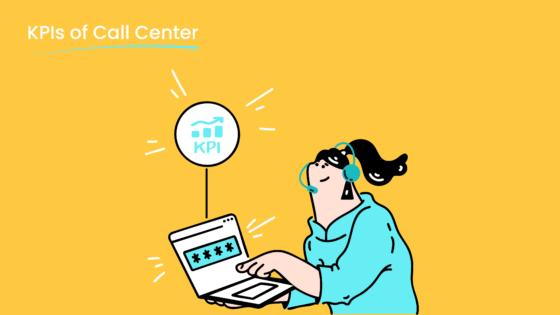
AI and Machine Learning
Predictive capabilities for identifying repeat call risks.
AI and machine learning are transforming how you manage repeat call rates. Predictive analytics can identify patterns in customer interactions, helping you anticipate issues before they escalate. For example, AI tools analyze historical data to flag accounts likely to require follow-up calls. This proactive approach reduces repeat calls and improves first call resolution. Studies show predictive analytics can enhance efficiency and productivity by 60%, making it a game-changer for your call center operations. As the AI tools market in the call center segment grows from $1.8 billion in 2023 to $17.05 billion by 2032, investing in these technologies ensures you stay ahead in customer service innovation.
AI-driven insights for improving customer interactions.
AI-driven insights help you understand customer behavior better. These tools analyze call data to provide actionable recommendations for agents. For instance, Sobot's Voice/Call Center uses AI-powered voicebots to handle repetitive queries, allowing agents to focus on complex issues. Smart call routing, powered by predictive analytics, can deflect up to 70% of calls, ensuring customers reach the right agent quickly. By leveraging AI, you can enhance customer satisfaction and streamline your call center operations.
Omnichannel RCR Tracking
Monitoring RCR across multiple customer service channels.
Omnichannel RCR tracking allows you to monitor repeat call rates across various platforms, such as phone, email, and live chat. This approach ensures you capture a complete picture of customer interactions. Companies with an omnichannel strategy see a 91% increase in customer retention year-over-year. Sobot's Voice/Call Center integrates seamlessly with multiple channels, enabling you to track and analyze RCR effectively. This integration helps you identify recurring issues and resolve them faster.
Ensuring seamless transitions between channels with tools like Sobot.
Seamless transitions between channels improve the customer experience. For example, a customer starting a query on live chat can switch to a phone call without repeating their issue. Omnichannel contact centers expedite resolution times by allowing customers to connect on their preferred platform. Sobot's unified workspace ensures agents have access to customer history across channels, reducing repeat calls and enhancing satisfaction. This capability strengthens your ability to deliver consistent, high-quality service.
Real-Time RCR Monitoring
Benefits of real-time dashboards for agents and managers.
Real-time monitoring dashboards provide instant insights into call center performance. These tools help agents and managers track key metrics like repeat call rates and first call resolution. For example, Sobot's Voice/Call Center offers real-time monitoring to identify trends and adjust strategies immediately. This capability improves decision-making and ensures your team stays aligned with customer needs.
Instant feedback to improve service quality.
Instant feedback from real-time monitoring enhances service quality. Dashboards display metrics like average handle time and customer satisfaction scores, helping agents refine their approach. For example, if repeat call rates spike, managers can intervene quickly to address the root cause. A recent study highlights that real-time monitoring improves first call resolution and reduces repeat calls, leading to better overall performance in your call center.
Understanding and tracking repeat call rate (RCR) is essential for improving your call center's performance in 2025. A high RCR often signals unresolved issues, which frustrates customers and increases operational costs. By monitoring RCR, you can identify recurring problems and address them effectively. This approach enhances customer satisfaction and operational efficiency.
Sobot's Voice/Call Center offers tools like real-time monitoring and AI-powered voicebots to reduce repeat calls. These features streamline workflows, improve first call resolution, and boost customer retention. Implementing these strategies ensures your call center delivers exceptional service while driving business success.
Start tracking RCR today to build trust, reduce costs, and create a seamless customer experience.
FAQ
What is the ideal repeat call rate for a call center?
An ideal repeat call rate for a call center is below 10%. This benchmark ensures efficient issue resolution and high customer satisfaction. Tools like Sobot's Voice/Call Center help you achieve this by offering real-time monitoring and analytics to reduce repeat calls effectively.
How can predictive analytics improve call center performance?
Predictive analytics identify recurring issues before they escalate. By analyzing historical data, you can proactively address customer concerns. Sobot's Voice/Call Center uses AI-powered insights to enhance first call resolution, reducing repeat calls and improving operational efficiency.
Why is omnichannel tracking important for call centers?
Omnichannel tracking ensures seamless customer service across platforms like phone, email, and live chat. It helps you monitor repeat call rates comprehensively. Sobot's Voice/Call Center integrates multiple channels, enabling agents to access customer history and resolve issues faster.
How does Sobot's Voice/Call Center reduce repeat calls?
Sobot's Voice/Call Center uses AI-powered voicebots, smart call routing, and unified workspaces to streamline workflows. These features improve first call resolution rates, minimize repeat calls, and enhance customer satisfaction. Learn more about its capabilities here.
What are the cost implications of high repeat call rates?
High repeat call rates increase operational costs by consuming agent time and system resources. Reducing these rates improves efficiency and lowers expenses. Sobot's Voice/Call Center provides analytics to identify inefficiencies and optimize resource allocation.
See Also
Best Call Center Analytics Tools to Use in 2024
Best Reviewed Automated Voice Calling Solutions for 2024
Best Free CRM Software for Call Centers in 2024
Enhancing Call Center Efficiency Through Effective Monitoring
